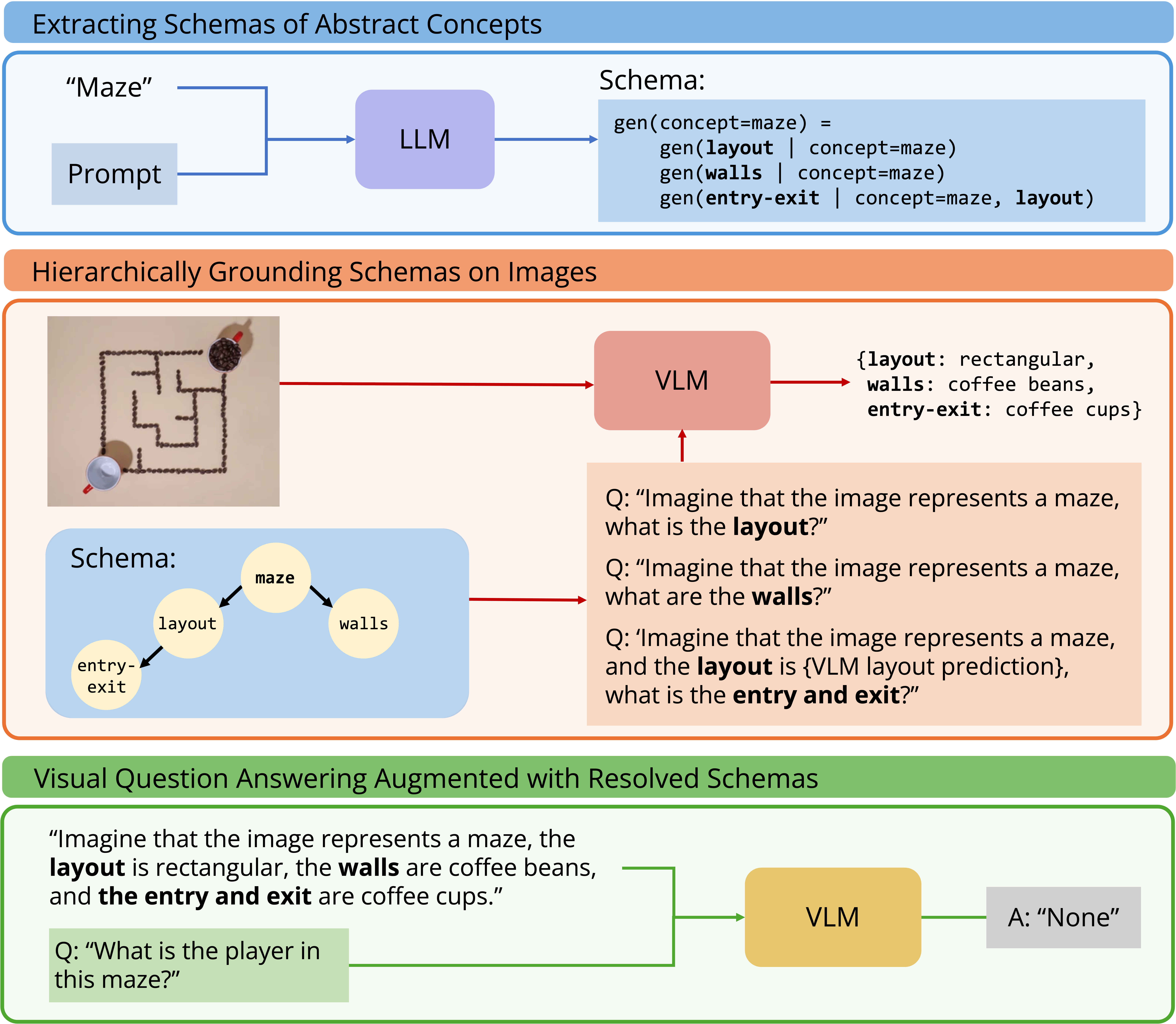Abstract concepts
Humans possess the remarkable ability to flexibly acquire and apply abstract concepts when interpreting the concrete world around us. Consider the concept "maze": our mental model can interpret mazes constructed with conventional materials (e.g., drawn lines) or unconventional ones (e.g., icing), and reason about mazes across a wide range of configurations and environments (e.g., in a cardboard box or on a knitted square). Our goal is to build systems that can make such flexible and broad generalizations as humans do. This necessitates a reconsideration of a fundamental question: what makes a maze look like a maze? A maze is not defined by concrete visual features such as the specific material of walls or its perpendicular intersections, but by lifted rules over symbols—a plausible model for a maze includes its layout, the materials composing the walls, and the designated entry and exit.
Current VLMs often struggle to reason about visual abstractions at a human level, frequently defaulting to literal interpretations of images, such as a collection of object categories. Here, we propose Deep Schema Grounding (DSG), a framework for models to interpret visual abstractions. At the core of DSG are schemas—a dependency graph description of abstract concepts. Schemas characterize common patterns that humans use to interpret and reason about the visual world. A schema for "helping" allows us to understand relations between characters in a finger puppet scene, while a schema for "tic-tac-toe" allows us to play the game even when the grid is composed of hula hoops instead of drawn lines. A schema for "maze" makes a maze look like a maze.

Deep Schema Grounding
Deep Schema Grounding (DSG) explicitly uses schemas generated by and grounded by large pretrained models to reason about visual abstractions. Concretely, we model schemas as programs encoding directed acyclic graphs (DAGs), which decompose an abstract concept into a set of more concrete visual concepts as subcomponents. The full framework is composed of three steps.
1. First, we extract schema definitions of abstract concepts from a LLM.
2. Next, DSG hierarchically queries a VLM, first grounding concrete symbols in the DAG (i.e., symbols that do not depend on the interpretation of other symbols), then using those symbols as conditions to ground more abstract symbols.
3. Finally, we use the resolved schema, including the grounding of all its components, as an additional context into a vision-language model to improve visual reasoning.
Our method is a general framework for abstract concepts that does not depend on specific models; the LLMs and VLMs used are interchangeable.



